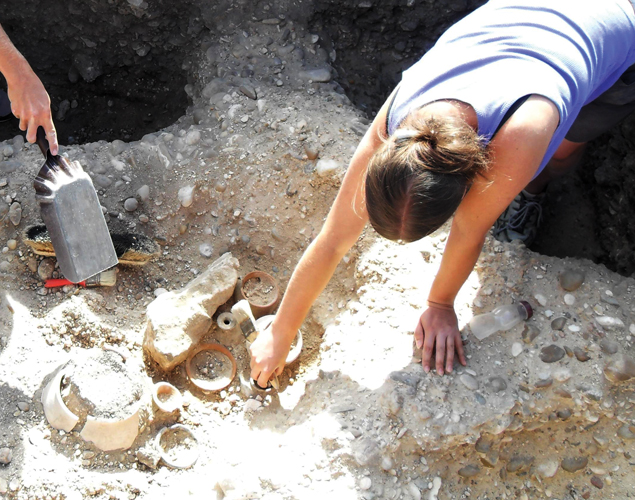RORY MACLEAN
News Editor
For most people, spending a hot summer month sifting through dirt in Spain is no vacation — but for University of Saskatchewan archaeology student Landon Perlett, it was the working vacation of his dreams.
In his final year of forensic archaeology, Perlett was looking to get some hands-on experience during the summer.
“I wanted to get first hand experience with actual bodies and bones,” he said.
The U of S offers a dig at Wanuskewin but this did not appeal to Perlett, so he hit the web. He came across a website called Shovel Bums, an American site which has a list of archaeology jobs around the world. That’s how he got connected with ArchaeoSpain.

The group is involved with several Roman and pre-Roman digs throughout Spain and Italy. Perlett spent his time in Valladolid, just north of Madrid.
Having no knowledge of Spanish, Perlett says the language barrier was tough at first but it wasn’t long before he could understand many of the conversations around him.Surprisingly, he says, he was one of only three other archaeology students on site. The rest of the program participants came from other areas of study.
“They just wanted to go Spain, learn some Spanish and do something cool,” said Perlett. The others were mostly from the U.S., with one student coming from England.
In Valladolid, students excavated a pre-Roman burial ground, or necropolis. Around 150 cremation burials have been uncovered on the site, revealing details about the warrior class among northern Spain’s Iron Age inhabitants, the Vaccean people. They settled the area around the 5th century B.C.E. and were later conquered by the Romans.
“They were basically all warrior graves, with spear-points, shields and armour links,” said Perlett.
On a typical day students would get up in the morning and walk to the dig, working until siesta time — when it became too hot to work — around 1 p.m. Work involved digging and then sifting each shovel full of dirt for artefacts and fragments.
Perlett says he actually made a pretty big discovery.
“I found a tomb myself,” he said. “I found it at about seven in the morning and worked on it until about nine at night.”
Warriors would be cremated and then buried with possessions that were of value to them. In his tomb, Perlett uncovered a rusty iron dagger and a small oil pot.
Students worked five days a week and had weekends off to explore the country.
“We actually got to see quite a bit of Spain and hang out at the university there,” said Perlett.
Every few weeks, ArchaeoSpain would bring in a professor to give the students a lecture on the Vaccean culture and help explain the objects they were digging up. Valladolid has long been a wine-producing region, so Perlett says they dug up a lot of wine-related objects as well.
“I wanted to get first hand experience with actual bodies and bones.”
-Landon Perlett
U of S archeology student
The program costs about $2,600, which includes food and accommodation but not airfare. Perlett thinks it’s a good deal, for what he got out of it.
“For a whole month in another country, it was pretty cheap overall,” he said.
“I had no expectations going in and I was completely blown away. The quality of the food and the people — everybody was so excited to be there. There were quite a few town festivals too.”
There’s also a thrill to uncovering something long-unseen, says Perlett.
“I wanted to get that feeling, that sense of awe when you actually dig up a tomb.”
It may be part adventure but the resume is not too far from Perlett’s mind either.
“I’m more on the forensic side of archaeology so I really wanted to be on a dig that would let me say I have had experience digging up humans.”